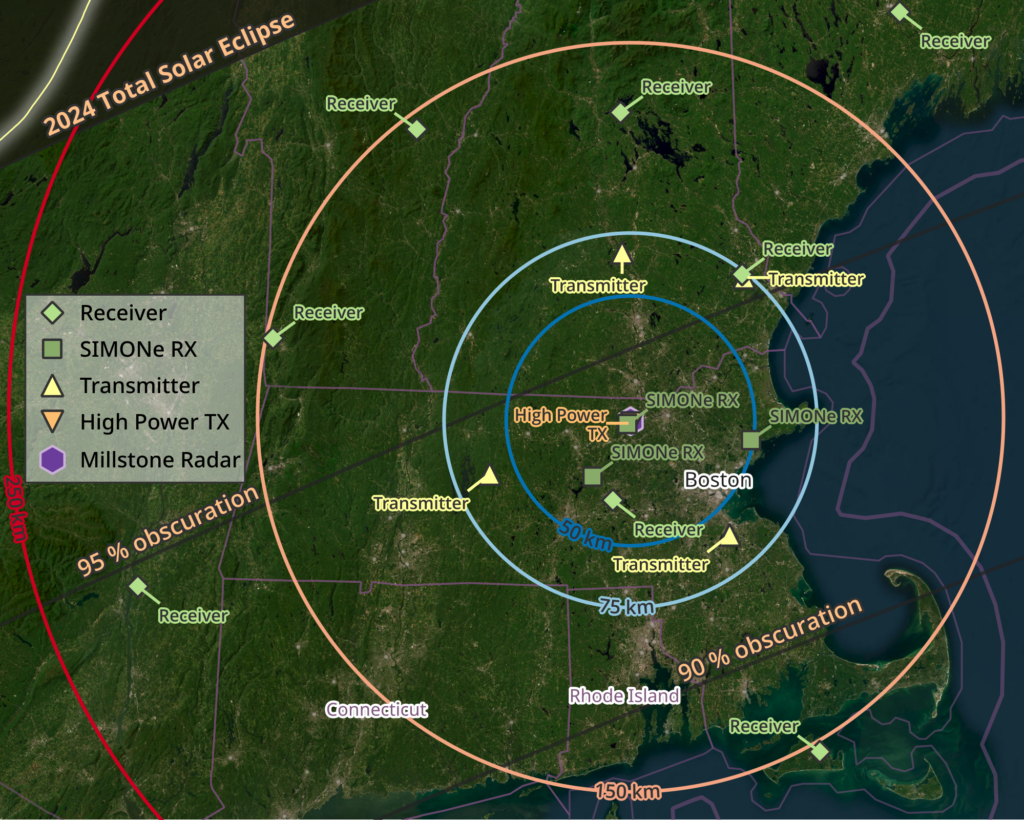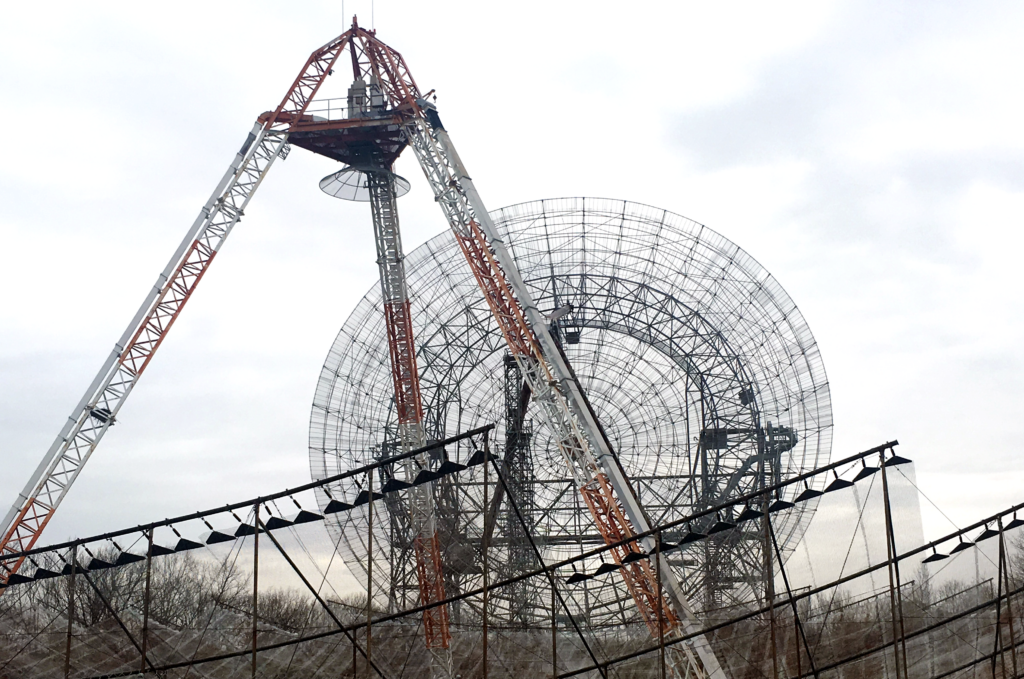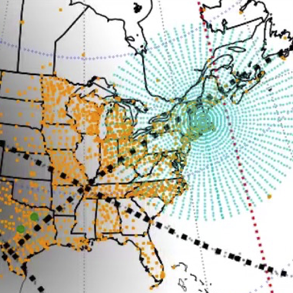Haystack Eclipse 2024 Science
Click here for our LIVE ECLIPSE DATA now available—and see below for research information
We’re not just admiring the eclipse—we’re studying it carefully! A solar eclipse has many significant effects on the Earth’s atmosphere, and our geospace and space weather experts will be watching closely (and safely, of course) to gather data on how the eclipse is changing our ionosphere.
Eclipse safety is very important. See NASA information at https://science.nasa.gov/eclipses/safety/

High-frequency radar network
A team of Haystack scientists are deploying small, portable antennas to create what is called a distributed array at locations around New England, within a 250km radius of MIT Haystack Observatory. These antennas are being installed in New Englanders’ backyards, fields, parking lots, and institutions, and will collect data in the form of radio waves to study the effects of the upcoming solar eclipse on the upper layers of Earth’s atmosphere. Their goals are to estimate upper-atmospheric wind fields from radio meteor observations and measure ionospheric density from radio reflection.
Two experiments will be making use of this locally deployed high-frequency radar network: Zephyr, which reflects a transmitted signal off of a meteor plasma trail and infers properties of the meteoroid and atmosphere, including wind speed and direction, and EMVSIS, which includes low-power transmit and receive antennas at each site. They are a new version of a type of antenna called a vector sensor, which bounces radar pulses off the charged ionosphere and measures directional behavior in the atmosphere from the resulting collected data. This information will allow scientists to measure much more accurately than ever before how the 2024 solar eclipse affects this layer of the Earth’s atmosphere and subsequent effects.

Millstone Hill ISR ionospheric observations
Scientists at Haystack will be observing the April 8 eclipse response in Earth’s ionosphere using the incoherent scatter radar (ISR) that is part of the Millstone Hill Geospace Facility located on our Westford, Mass., campus. The 68m fixed Zenith antenna will be combined with the 46m steerable MISA (Millstone Hill Ionospheric Steerable Antenna), with a newly replaced foundation, for observations. The Millstone Hill ISR is supported by the US National Science Foundation as a community radar observatory, and is the only high-power large aperture ionospheric radar of its kind in the continental United States.
To observe eclipse response, Millstone Hill ISR will be making mid-latitude observations both in vertical directions and over a wide range of locations in the eastern United States. The favorable location of Millstone Hill at sub auroral latitudes, combined with the great operational range afforded by the steerable MISA antenna, permit observations over a latitude span encompassing a large part of the region between the polar cap and the near-equatorial ionosphere. The radar is capable of making observations of ionospheric parameters over a range from 90 to 1000 km in altitude. Geographic coverage is approximately from just short of the Arctic circle to the north, past Florida to the south, to the central Atlantic Ocean to the east, and out to Iowa in the west.
As the experiment progresses, preliminary near real time plots of key altitude-dependent ionospheric parameters (electron density, electron temperature, ion temperature, and ion velocity) measured by the Millstone Hill system are available through the Millstone Hill ISR Radar Status page, where you can click on Plots and then on the name of each parameter at the top to show vertical and scanning summary plots as the two radar antennas collect information.

GNSS/GPS network observations
Haystack scientists and colleagues will be using data from observations taken with a large-scale GNSS (Global Navigation Satellite System) network that extends across the United States. Additional high-data-rate GNSS receivers are being set up in the area of totality for the period immediately before and following the April 2024 eclipse. The “quiet time” before the eclipse is monitored as a reference period to contrast with the data gathered during the eclipse and to help calibrate the real-time data during observations.
Scientists know already that an eclipse has certain effects on the layers of the Earth’s atmosphere. During a total solar eclipse, in the thermosphere (the second-highest layer of our atmosphere), there will be a drop in temperature, wind speed, and concentration of nitrogen and oxygen. In the ionosphere (the atmospheric layer with charged particles), total electron content (measured by the GNSS network) falls dramatically.
We are grateful for the many amateur participants who are hosting these receivers across the continental United States and contributing to science. This data will be available in near real-time during the eclipse.